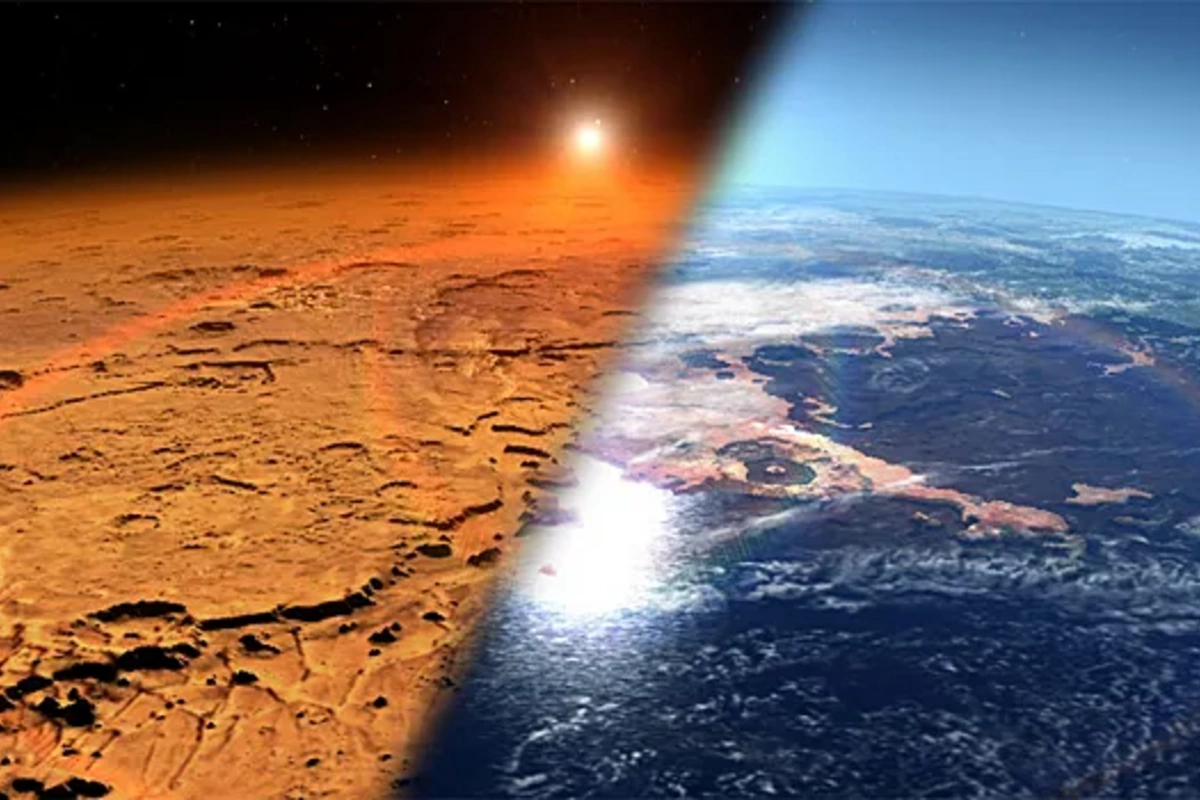Ancient Ocean on Mars: Geological Evidence Found## User uploaded file: unknown.jpg (file was not provided in this conversation)

Billions of years ago, water flowed across the surface of Mars. Most scientists are convinced that rivers existed on the Red Planet. But where did these rivers flow into? Now this question has been answered.
"We don't know of any form of life on Earth or elsewhere in the Universe that could survive without liquid water. Therefore, the more water that once existed on Mars, by simple logic, the higher the chance for the existence of life," notes geologist and planetary scientist Corey Hughes from the University of Arkansas.
To better understand the geology of ancient Martian rivers, researchers who published their work in Geophysical Research Letters, compared rocks on Earth and Mars. Among them - sandstone formed by a river that flowed through the territory of northwestern Arkansas about 300 million years ago.
How rivers flow
If you imagine a river without human-made dams, its channel will constantly change, winding like a ribbon. Water flows carry sediments - silt, clay, stones. By eroding one bank, they cause the river to shift, while sand and small soil particles are deposited on the opposite bank. The area where the channel shifts from side to side over time is called a meander belt, or channel belt.
As the river approaches the ocean, its flow slows down, and it can no longer transport as much sediment. Particles begin to settle, forming a delta. At the same time, the force of bank erosion decreases, causing the channel fluctuations to weaken. In this place, the channel belt narrows, and the river drops below sea level. This section is called a backwater zone.
The backwater zone can be very extensive. For example, on the Mississippi, it begins near Baton Rouge - 370 km from the coast. Observing Mars from space, Hughes discovered geological traces of ancient backwater zones.
"This is such a large-scale process that it can be noticed from orbit," he explains.
The presence of deltas with long backwater zones is serious evidence that large rivers existed on Mars, flowing into an ocean before the planet completely dried up.
"These deltas are very mature. This is a strong argument in favor of the fact that once there was an ancient ocean or at least a huge sea on Mars," the researcher emphasizes.
Ancient history in stone
How can one reconstruct the outlines of a river that dried up billions of years ago? During the flow process, sediments accumulate on the bottom, which over time turn into sandstone.
On Earth, the movement of tectonic plates brings these rocks to the surface. Then rain and winds destroy the upper layers, leaving only the more solid bottom - this is how ridges are formed. This process is called topographic inversion.
There are no tectonic plates on Mars, so inverted ridges formed differently there: the softer deposits around the sandstone were destroyed, while the solid structures remained. It is these that indicate the existence of long-disappeared rivers.
Scientists have known about this for several decades. But the only example of an inverted river delta on Earth is found in northwestern Arkansas. This is the so-called Wedington Sandstone formation - part of an extensive network of ridges left by a river that flowed from the territory of modern Indiana into a sea covering central Arkansas about 300 million years ago.
It was these rocks that prompted Hughes to conduct his research. "I came here to study geology, and suddenly it turned out that the necessary samples were right at hand. This is real luck," says the scientist.
Similar News
Trump accused ex-president of the USA of Russia's annexation of Crimea
Former US President Barack Obama forced Ukrainian authorities to give up Crimea in favor of Russia. As reported by BAKU.WS, this was stated by the current Ameri...




 Azərbaycanca
Azərbaycanca  По-русски
По-русски  English
English 





